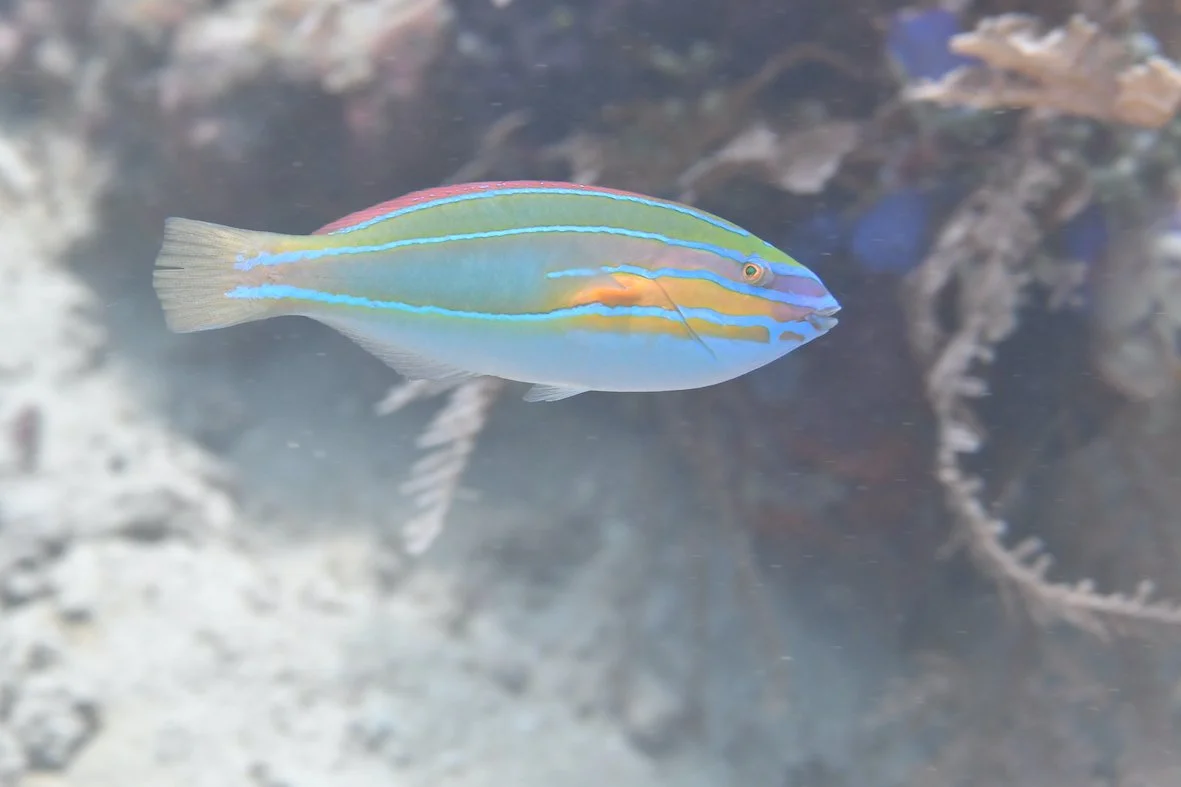Reef Fish Diversity in Bangka
North Sulawesi is home to a staggering diversity of tropical fish.
Around Bangka Island and its neighboring reefs, researchers have documented over a thousand species, an astonishing number for such a small area. Understanding which species thrive, and which struggle under human and environmental pressures, is key to predicting the future of these ecosystems.
Capturing life underwater
Madeleine Parnot, a PhD student from Tübingen, Germany, has begun a long-term study on reef fish biodiversity in the region. Her project aims to assess which species are resilient to anthropogenic disturbance and climate change, and what traits allow them to succeed in changing conditions. This information is essential for conservation planning and for protecting the rich biodiversity of the Coral Triangle.
Research Methods
Biodiversity assessment in tropical reefs comes with challenges: many fish species look remarkably similar, making underwater identification prone to mistakes. To address this, Madeleine relies on underwater photography.
An ideal “diagnostic” picture includes the entire fish from the side, as flat as possible, allowing researchers to clearly see traits that help identify the species. By capturing detailed images during dives and snorkeling excursions, she can carefully identify species later on land using reference materials.
The picture naming system follows a standard established by Prof. Nico Michiels. Each file name includes the family, genus, and species of the fish, the site name (using a three-letter code), as well as details about the fish’s life stage, behavior, and coloration. Additional information recorded in the name includes the date and time, the photographer, and the type of camera used, with optional camera settings noted when relevant. This systematic approach ensures that each image is traceable, organized, and scientifically useful for species identification and biodiversity studies.







